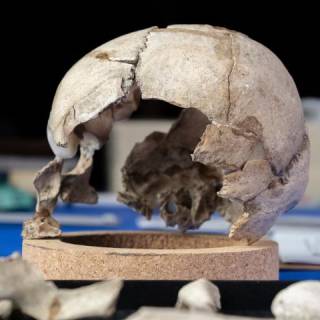A skull and other bone fragments that were found on a remote Pacific island may, in fact, belong to the famous female aviator Amelia Hart.
But it may take modern DNA testing to help researchers close the case.
The bones were found found on Nikumaroro, a remote island in the western Pacific Ocean, in 1940. But it wasn't until a 2018 study when people began to suspect they could very well belong to Earhardt. That's when researcher Richard Jantz re-examined their measurements and found they closely matched those of the missing aviator.
Now, Dr. Erin Kimmerle, a forensic anthropologist at South Florida University, will use DNA testing to confirm the theory. Kimmerle sent samples off for DNA testing and is awaiting the results.
She was invited by National Geographic and will appear in an upcoming documentary about the pilot.
Whether or not the bones are positively identified as Earhart's, Kimmerle sees this as an exciting opportunity to focus on the legendary woman's life, rather than the story of her death.
"I think a lot of the focus is always on the mystery," she told CNN. "And, certainly, we always want to solve that and find out what happened. But whether this is her or not, [the real value] in a historic case like this that gets so much attention is really looking at that person's life and what they achieved."
The bones in question were originally dismissed by a researcher as male remains. Then, for decades, the bones he incorrectly identified were missing. Last year, they turned up in a museum on the island of Tarawa.
If the bones are confirmed to be Earhart's, the flurry of theories surrounding her sudden, mysterious disappearance will be quashed, confirming that she did not die in a crash but survived for some time as a castaway far out in the Pacific.
The day she disappeared from the sky
As a determined record-breaker, Earhart committed herself to becoming the first woman to fly around the world. In June 1937, she took off from Lae, New Guinea with her navigator Fred Noonan, intending to finish the journey by landing on Howland Island in the Pacific Ocean.
On July 2, when approaching Howland Island, the pair radioed the US Coast Guard that they were low on fuel and having difficulty finding the island.
That day, the pair disappeared from the skies forever.
The US Navy and Coast Guards searched for the missing pilot and her navigator for weeks, but could never find ruins of the crash or the pair.
A symbol of women's empowerment
The chatter and speculation about her disappearance often eclipses her groundbreaking career as a female aviator. Though she was only forty years old when she died, Earhart's life was filled with record-breaking accomplishments that have made her an inspirational figure to many.
In 1932, she became the first woman -- and the second pilot after Charles Lindbergh -- to make a solo flight across the Atlantic Ocean.
Later that same year, she became to first woman to make a nonstop, solo flight across the United States, beginning in Los Angeles and arriving in Newark, New Jersey, 19 hours and five minutes later.
She was also a founder and the first president of the Ninety-Nines, an organization chartered by 99 female pilots intended to promote recruitment of female aviators and provide business and social resources to its members.
